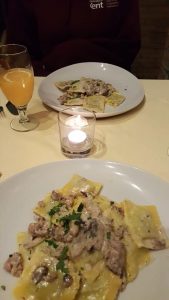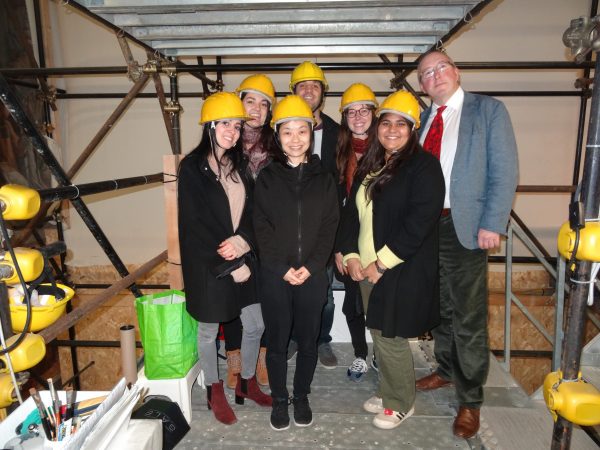Our ancient history and archaeology students have been having just as busy and fulfilling a time as the art historians. Much of January for our students was spent settling in to their new accommodation and their new routine: most have been able to live with the friends they made while studying at Kent back in the Autumn Term, and it’s fantastic to see such strong personal relationships developing into effective working relationships too.
This has been so important and helpful for them over the last month. We begin each week with a lecture from Dr Higgins, an expert in material culture. Students then head out to see the sites first-hand. February began with the Colosseum and Arch of Constantine (of course), followed by the building programme of the emperor Trajan (marketplaces, temples, columns…).
Then there’s the Pantheon, mausolea of Augustus and Hadrian, the epic baths of the emperor Diocletian…the list goes on. Since students work together to prepare talks discussing their favourite aspects of the sites, the close bonds they’ve formed are really bearing fruit this month. As February draws to a close, we are gearing up for two trips beyond the ancient city to consider its surroundings in the imperial period. Shortly we will be taking a trip to Ostia, Rome’s principal sea-port and a major centre of trade in the 1st century AD and beyond. We’re also preparing for a jaunt to the ruins of Herculaneum and Oplontis, two ancient Roman towns in the Campania region. One of the (few) fortunate things about the eruption of Vesuvius in 79 AD is that the quantities of volcanic ash and pumice preserved these fantastic sites for us see in a comparatively solid state of preservation today.
This doesn’t mean that it’s all work, of course: when in Rome! Kent students are evidently making the most of the Italian they learned in the Autumn term and rightly putting it into practice as they enjoy everything that the Eternal City has to offer.





